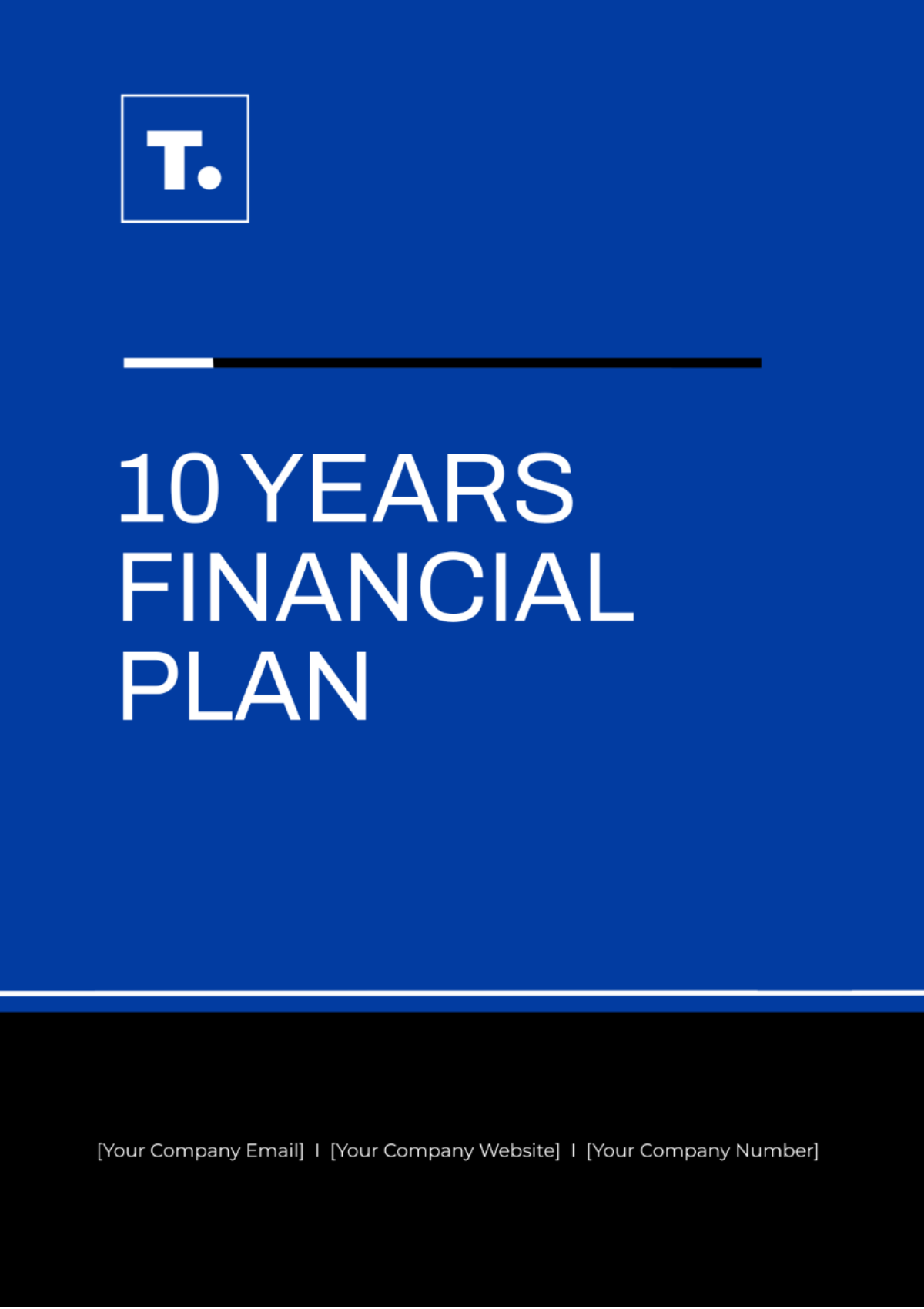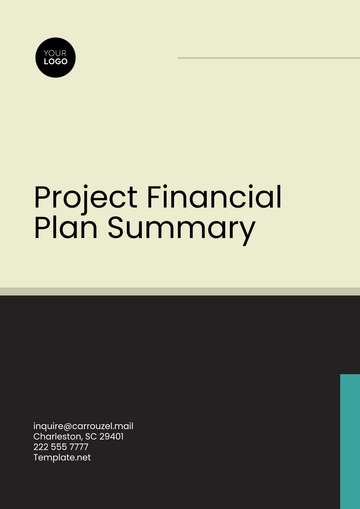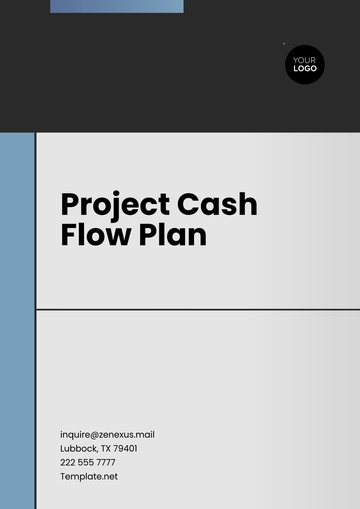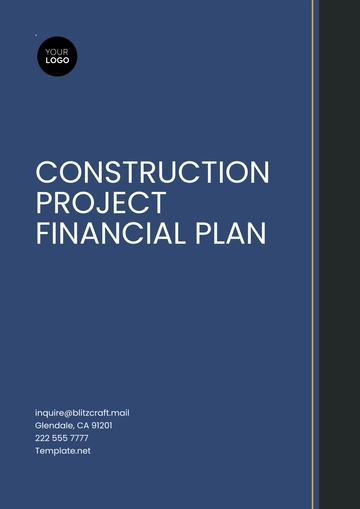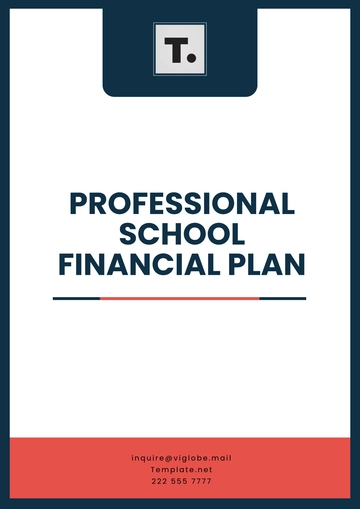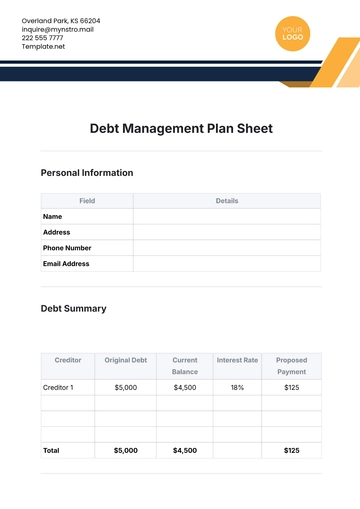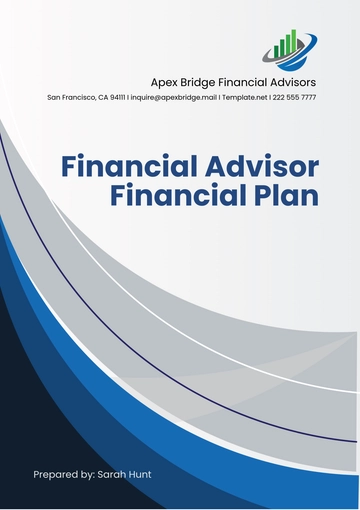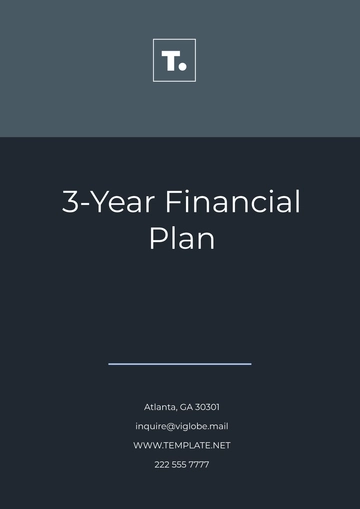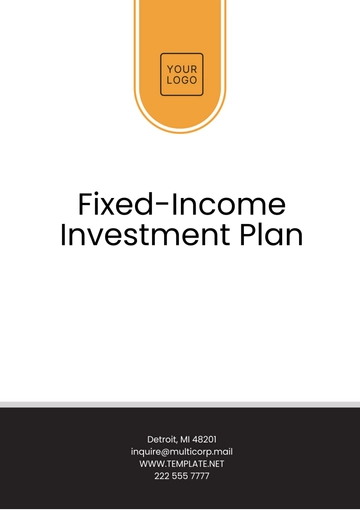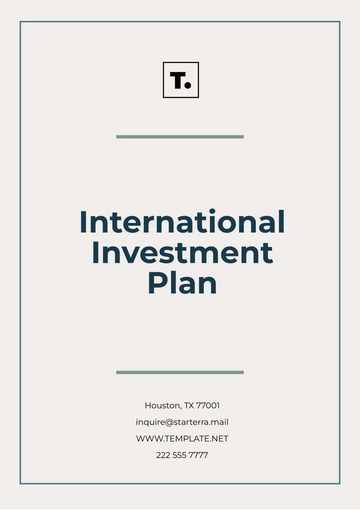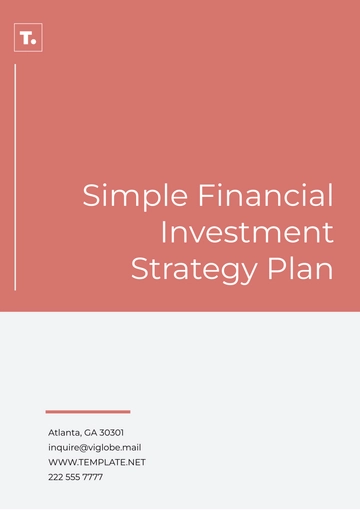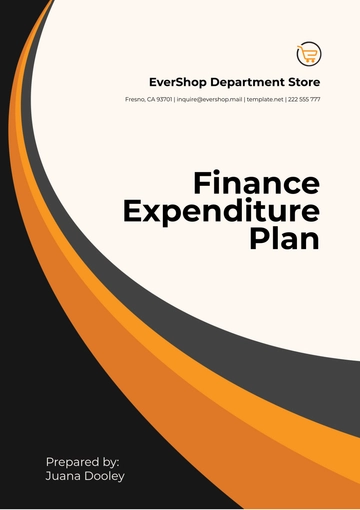10 Year Financial Plan
Prepared by: [Your Name]
I. Executive Summary
[Your Name] presents this 10 Year Financial Plan for [Client Name] to outline long-term financial goals and strategies for achieving them. This plan includes projections for income, expenses, investments, and savings, considering various economic scenarios and milestones.
II. Current Financial Situation
A. Assets
Cash and Equivalents: $100,000
Investments: $250,000
Real Estate: $500,000
Retirement Accounts: $300,000
Other Assets: $50,000
B. Liabilities
Mortgage: $200,000
Loans: $50,000
Credit Card Debt: $10,000
Other Liabilities: $20,000
III. Financial Goals
A. Retirement Planning
Goal: Achieve retirement savings of $1,000,000 by 2055.
Strategy: Contribute $20,000 annually to retirement accounts.
B. Debt Reduction
Goal: Pay off mortgage debt of $200,000 by 2040.
Strategy: Increase monthly mortgage payments by $500.
IV. Income Projections
A. Salary
B. Other Income Sources
Rental Income: $12,000
Investment Income: $8,000
Business Revenue: $20,000
V. Expense Projections
A. Fixed Expenses
Mortgage/Rent: $1,500
Utilities: $300
Insurance: $200
Taxes: $500
B. Variable Expenses
Groceries: $600
Entertainment: $300
Travel: $1,000
Miscellaneous: $400
VI. Investment Strategy
A. Asset Allocation
Stocks: 60%
Bonds: 20%
Real Estate: 15%
Other Investments: 5%
B. Expected Returns
Stocks: 8%
Bonds: 4%
Real Estate: 6%
Other Investments: 10%
VII. Savings Plan
A. Emergency Fund
B. Other Savings Goals
VIII. Risk Management
A. Insurance
Life Insurance: Term policy covering $500,000
Health Insurance: Family plan with a premium of $400/month
Property Insurance: Homeowners insurance with $300,000 coverage
B. Contingency Plans
Scenario Planning for Job Loss: Emergency savings can cover expenses for 6 months
Health Crisis Preparedness: Health savings account funded with $5,000 annually
Market Downturn Strategy: Diversified investment portfolio to minimize impact
IX. Tax Planning
A. Deductions and Credits
Retirement Account Contributions: Maximizing contributions to 401(k) and IRA
Charitable Contributions: $1,000 annually to qualified charities
Education Expenses: Maximizing tax deductions for education expenses
B. Tax Optimization Strategies
Tax-Loss Harvesting: Regularly review investment portfolio for tax-loss harvesting opportunities
Income Shifting: Utilize income-splitting strategies for tax optimization
Capital Gains Planning: Strategically time asset sales to minimize capital gains tax
X. Action Plan
Review and Adjust Financial Plan Annually
Monitor Investment Performance Quarterly
Update Will and Estate Plan Every 5 Years
Year | Income | Expenses | Savings |
|---|
2050 | $200,000 | $100,000 | $100,000 |
2051 | $210,000 | $110,000 | $100,000 |
2052 | $220,000 | $120,000 | $100,000 |
2053 | $230,000 | $130,000 | $100,000 |
XI. Review and Monitoring
XII. SWOT Analysis
| Strengths | Weaknesses |
|---|
Opportunities | Diverse Income Sources | High Debt Levels |
Threats | Economic Growth Potential | Market Volatility |
Plan Templates @ Template.net
